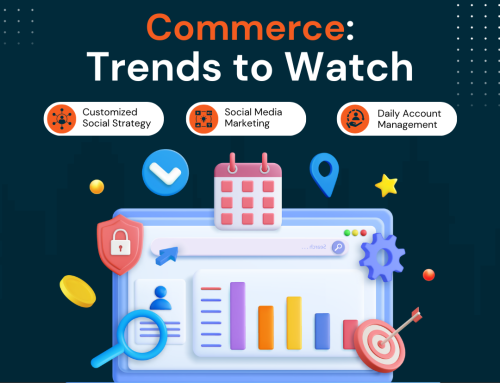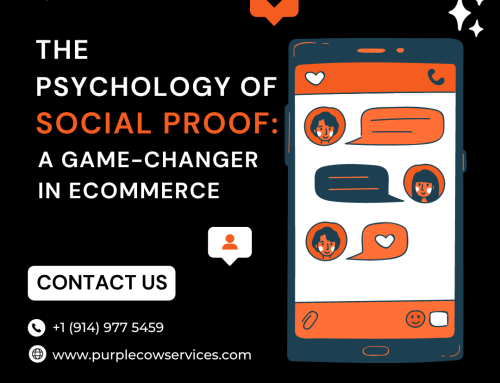In the digital age, social media isn't just about sharing cute cat videos and vacation photos. It's a bustling marketplace where businesses can connect with their audience and sell products and services seamlessly.
Share This Story, Choose Your Platform!
Welcome to the world of social commerce—a game-changer for entrepreneurs and marketers. In this guide, we’ll dive into how you can leverage social media marketing to boost your sales and take your business to new heights.
The Social Commerce Revolution: What You Need to Know
Understanding Social Commerce
Social commerce isn’t just a buzzword; it’s a transformation in how businesses interact with customers. It involves using social media platforms as sales channels, allowing users to browse, shop, and make purchases without leaving their favorite apps.
With the rise of platforms like Instagram Shopping and Facebook Marketplace, social commerce has become a prominent player in the eCommerce landscape. It’s about making the shopping experience as convenient and seamless as possible for users.
The Power of Convenience: Social commerce capitalizes on the convenience factor. Shoppers can discover products, read reviews, and make purchases without switching between multiple apps or websites.
Why Social Commerce Matters
The significance of social commerce is evident in the numbers. According to Statista, in 2021, social commerce sales in the United States alone are projected to reach a staggering $36.62 billion. This growth isn’t limited to one region—it’s a global phenomenon.
The allure of social commerce lies in its ability to tap into the vast user bases of social media platforms. Think about it: Facebook has over 2.8 billion monthly active users, and Instagram boasts more than 1 billion. These platforms offer a captive audience just waiting to discover your products and services.
Building Your Social Commerce Strategy
Crafting Your Social Commerce Game Plan
Success in social commerce begins with a well-thought-out strategy. It’s not about haphazardly posting product links; it’s about creating a seamless shopping experience for your audience.
Know Your Audience: Start by understanding your target audience’s preferences and behaviors on social media. What platforms do they use? What types of content do they engage with? Tailor your strategy to match their habits.
Choose the Right Platforms: Not all social media platforms are created equal when it comes to social commerce. Instagram, Facebook, Pinterest, and even TikTok are emerging as hotspots for eCommerce. Pick the platforms that align with your target audience.
Setting Up Shop on Social Media
Creating a Shoppable Profile
Once you have your strategy in place, it’s time to set up shop on social media. Most major platforms offer features that allow you to turn your profile into a shoppable destination.
Instagram Shopping: If you’re on Instagram, explore Instagram Shopping. It lets you tag products in your posts and stories, allowing users to tap and view product details without leaving the app. You can also set up a dedicated Shop tab on your profile for easy browsing.
Facebook Marketplace: Facebook Marketplace is an excellent choice if you want to list products for sale within the Facebook ecosystem. Users can discover your items while scrolling through their News Feeds or by visiting the Marketplace tab.
Creating Engaging Content
Crafting Compelling Product Posts
In the world of social commerce, content is king. Your product posts should not only showcase what you’re selling but also engage and entice your audience.
High-Quality Imagery: Invest in high-quality product photography. Clear, well-lit images that highlight the details of your products can make a significant difference.
Use Videos: Don’t underestimate the power of video. Short product demos, behind-the-scenes footage, or customer testimonials in video format can be incredibly engaging.
The Art of Social Selling
Building Trust and Relationships
One of the key advantages of social commerce is the ability to build trust and relationships with your audience.
Authenticity: Be authentic in your interactions. Respond promptly to comments and messages, and provide honest and helpful information. Authenticity builds trust, which is vital for repeat business.
User-Generated Content: Encourage your customers to share their experiences with your products. User-generated content, such as reviews, testimonials, and customer photos, adds credibility to your brand.
Maximizing Social Advertising
Boosting Your Reach with Paid Social
While organic reach on social media is valuable, don’t overlook the power of paid social advertising. Platforms like Facebook and Instagram offer robust advertising tools to help you reach a wider audience.
Targeted Ads: Use the detailed targeting options available on social media platforms to reach users who are most likely to be interested in your products or services. You can refine your audience based on demographics, interests, and behaviors.
Retargeting: Implement retargeting campaigns to re-engage users who have visited your website or interacted with your social profiles. Remind them of your products and entice them to complete their purchase.
Measuring Success: Analyzing Social Commerce Metrics
Evaluating Your Performance
The beauty of social commerce is the ability to track and measure your performance accurately. Key metrics to monitor include:
Conversion Rate: Track the percentage of users who make a purchase after clicking on your social commerce posts or ads. This metric reflects the effectiveness of your content and offers.
Click-Through Rate (CTR): Measure the percentage of users who click on your product links. A high CTR indicates that your content is compelling and relevant to your audience.
Revenue and ROI: Keep a close eye on your social commerce revenue and return on investment (ROI). Evaluate whether your social commerce efforts are generating a positive return and adjust your strategy accordingly.
Handling Customer Service and Support
Providing Seamless Assistance
In social commerce, customer service plays a significant role in retaining customers and fostering brand loyalty.
Prompt Responses: Aim for quick responses to customer inquiries. Social media users expect timely assistance, and a delayed response can lead to frustration.
Problem Resolution: Be proactive in resolving customer issues. Address complaints or concerns with empathy and professionalism. A satisfied customer can turn into a brand advocate.
Scaling Your Social Commerce Efforts
Expanding Your Reach
As your social commerce efforts gain traction, consider expanding your reach and exploring new opportunities. Collaborate with influencers or partner with other brands for cross-promotions. Keep an eye on emerging trends and features on social media platforms that can enhance your social commerce strategy.
Conclusion: Riding the Social Commerce Wave
Social commerce is not a passing trend; it’s the future of eCommerce. By leveraging the power of social media marketing, you can connect with your audience, build trust, and drive sales—all within the familiar and convenient spaces of social media platforms. It’s time to ride the social commerce wave and take your business to new heights of success.
Revolutionize your business with Purple Cow‘s Social Media Marketing Solutions. Our expert strategies will transform your social media presence into a thriving marketplace. From creating shoppable profiles to engaging content and targeted advertising, we’ll help you reach your audience where they spend their time. Build trust, boost sales, and embrace the future of eCommerce with Purple Cow Services.
Share This Story, Choose Your Platform!
In This Blog:
- The Social Commerce Revolution: What You Need to Know
- Building Your Social Commerce Strategy
- Setting Up Shop on Social Media
- Creating Engaging Content
- The Art of Social Selling
- Maximizing Social Advertising
- Measuring Success: Analyzing Social Commerce Metrics
- Handling Customer Service and Support
- Providing Seamless Assistance
- Scaling Your Social Commerce Efforts
- Conclusion: Riding the Social Commerce Wave

















